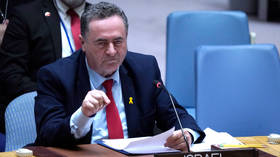The story of a short but bloody war
The conflict in the region has forced South Ossetia and Abkhazia to once again call on the world to officially recognise their separation from Tbilisi.
Late in the evening of August 7, just before midnight, Georgian artillery struck the South Ossetian capital, Tskhinval. It came just hours after the Georgian President, Mikhail Saakashvili, had announced a ceasefire after several days of skirmishing between South Ossetian and Georgian troops.
However. the violence did not end there as Georgian shells and later fighter jets hit targets and buildings in Tskhinval. By the next morning, Tbilisi's military operation, which it had dubbed called “Clean Field” was deploying infantry units and tanks.
Russia called an extra session of the UN Security Council in a bid to end the Georgian aggression. Georgia insisted they were trying to restore constitutional order but a late meeting in New York failed to bring any results.
Georgian troops entered Tskhinval and attacked checkpoints manned by Russian peacekeepers.
By the evening of Friday, August 8, the capital of the breakaway republic was under the control of the Georgian forces. Civilians, along with journalists and peacekeepers, were taking shelter in basements.
Taking into account that many in South Ossetia had Russian passports, President Dmitry Medvedev ordered elements of the 58th Army into the conflict zone. As Russian tanks approached the devastated city, Mikhail Saakashvili claimed that Russia had invaded Georgia.
The West cautiously raised concerns. Initial reports said hundreds had been killed in attacks on South Ossetia.
On the second day of war, the shelling of Tskhinvali and the nearby villages continued.
As Russian forces entered South Ossetia, heavy fighting broke out on the streets, leading to thousands of people trying to flee the region.
Russian fighter jets started to strike military targets on Georgian territory, while Tbilisi claimed that Russian planes were targeting civilian buildings with reports that dozens had been killed in a bomb attack on the city of Gori, 60 km north of the capital.
By the middle of the third day, Georgian units had almost been pushed out of Tskhinval.
Another meeting of the UN Security Council again resulted in no decision, but almost all envoys came forward to strongly criticise Russia, not Georgia, for its military actions.
The fourth day started with Tbilisi announcing another ceasefire, but during the next two days Georgian forces did not stop fighting and continued to shell South Ossetia.
By this time more than 35,000 people had fled to Russia's republic of North Ossetia.
On the fifth day Dmitry Medvedev and his French counterpart Nicolas Sarkozy drew up a six-point plant aimed at ending the hostilities. It was later signed by President Mikhail Saakashvili in Tbilisi.
Russian military units remained in several Georgian settlements, including Gori, to prevent an escalation of violence.
August 13 was declared a day of mourning across Russia in memory of those who had fallen victim to Georgian aggression.
Russia subsequently started to withdraw its forces from Georgian territory.












